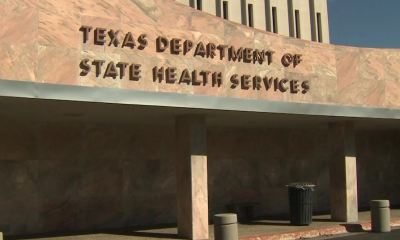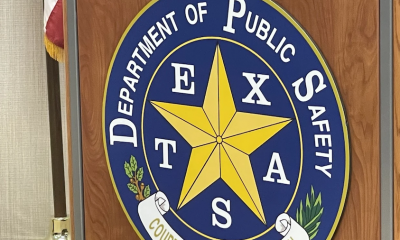U.S. News
Most prisoners will return home, and they need a path to rebuild their lives
DALLAS, TX – The city of Dallas is no stranger to crime and 2020 was a landmark year for all of the wrong reasons. After the headlines fade and hashtags are replaced with new ones, people will eventually come home after serving their sentences. In fact, 95% of state prisoners who go to jail will return home.
It’s probably fitting that jails and prisons are categorized as “penal institutions” as they are designed to do exactly that: punish, not rehabilitate. This is due in large part to the massive number of people incarcerated each year as tax dollars only stretch so far. As a result, the majority of any rehabilitative measures are left to returning citizens (formerly referred to as ex-cons).
Our fellow Dallas residents might not fully comprehend the reality facing the thousands of returning citizens reintegrating into society. It’s not hard to see why. Hollywood often tells the story of the lone man leaving prison returning to a house, a job (or at least an offer), some family and a support system trying to help.
Unfortunately, this isn’t reality.
The majority of those who leave jail or prison are released on parole, which requires them to have places to be released to. Halfway houses? Most are at capacity and underfunded. Homeless shelters? The same. More often than not, returning citizens are released to family members who begrudgingly accept them with added false perceptions that they’ll be “off of the couch in a couple of weeks.” Unfortunately, most families, while well-intentioned, are ill-equipped to handle the issues that come with this adjustment.
Getting “off the couch” requires employment and we know more than 70% of employers use background screenings to disqualify candidates. Without employment and facing pressure to ease reliance on family members, these people often feel they have no choice but to turn to the group that will willingly take them in — a group they were spending time with when they first became involved with the criminal justice system.
This is the reality for many that come through our doors at the Texas Offenders Reentry Initiative (TORI). We’ve been tackling this persistent problem for nearly 20 years.
Once the onset of the COVID-19 outbreak reached our city last spring, the Texas Department of Criminal Justice let me know they were considering releasing more inmates. That would mean more people released into a community in the throes of an unfamiliar, quickly evolving, isolating pandemic.
Dallas is the second-highest destination for releasees in the state of Texas, and the city has infrastructure to care for these people. TORI’s work to aid in this reintegration produces tax-paying, productive citizens of their communities through proven rehabilitative measures that focus on employment, education, health care, housing, spiritual enrichment and family reunification. We’ve had incredible success in rebuilding families, lives and communities as a result.
TORI doesn’t walk alone in this fight. In 2019, nearly 900 business leaders, community leaders and human resources professionals heeded the call of its founder, Bishop T.D. Jakes, and then-AT&T chief executive Randall Stephenson to attend an inaugural meeting we hosted to better understand the benefits of this untapped workforce, people who have gone through proven programs like ours.
My hope is that examples like these continue. As the nation and our city continue to learn about our need for criminal justice reform, testaments about the strength and understanding of a city can do wonders for proper reform.
Even in the midst of a global pandemic we saw returning citizens, many of whom are our clients, becoming the very essential workers the country needed. But while the average citizen might have easily adjusted, the hurdles for many returning citizens were vast.
The digital language many of us are fluent in was a completely foreign language for those who spent decades behind bars. Prior to the pandemic, we might have directed coursework on proper résumé techniques. However, the digital language barrier required us to teach about using smartphones, web meeting applications and applying for jobs online.
As I said, 95% of state prisoners will come home. People in Dallas must decide if we want to spend tax dollars on mass incarceration or support efforts to rehabilitate and extend opportunities to those that have earned a second chance.
Criminal justice reform requires a collective of intentional choices that the people of Dallas can do at any level. Whether it’s updating our language in how we refer to returning citizens, supporting legislation that is smart on crime and not just tough on crime, creating your own second-chance hiring program or contributing directly to nonprofits like TORI, we can all create a healthier reality for returning citizens.
I can assure you, while we seek to create light and second chances for others, we will naturally light our own path for generations to come.










